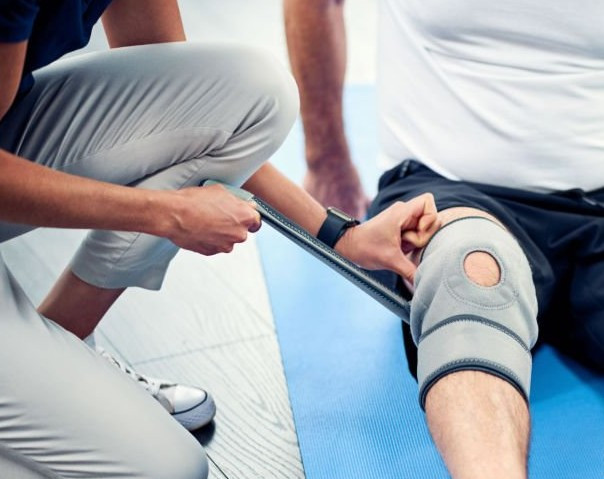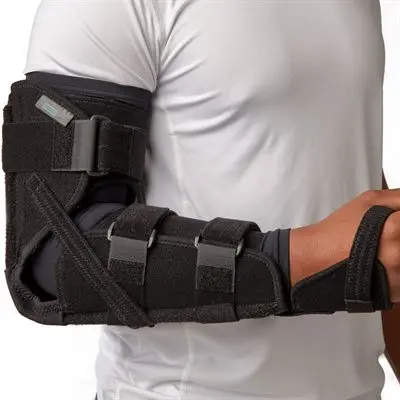What Are Lower Extremity Orthotics?
Lower extremity orthotics are devices designed to support, stabilize, or correct the function of the lower limbs, including the foot, ankle, knee, and hip. These orthoses are commonly used to manage conditions such as foot drop, joint instability, and post-surgical rehabilitation.
Types of Lower Extremity Orthotics
We offer a variety of orthotic devices to address specific needs:
Ankle-Foot Orthoses (AFOs)
AFOs are designed to support the ankle and foot, improving gait and stability. They are commonly prescribed for conditions like foot drop, spasticity, and post-stroke rehabilitation. AFOs can be custom-molded or prefabricated to suit individual requirements.
Knee-Ankle-Foot Orthoses (KAFOs)
KAFOs provide support to the knee, ankle, and foot, offering enhanced stability for individuals with knee weakness or instability. They are often used in cases of spinal cord injury, post-polio syndrome, or severe neurological conditions.
Hip-Knee-Ankle-Foot Orthoses (HKAFOs)
HKAFOs extend support to the hip, knee, ankle, and foot, facilitating standing and walking in individuals with significant lower limb weakness or paralysis. They are typically used in patients with conditions like spina bifida or high-level spinal cord injuries.
Custom Foot Orthoses
Custom foot orthoses are tailored inserts designed to fit the unique contours of an individual's feet. They help alleviate pain, improve alignment, and enhance overall foot function. These orthoses are particularly beneficial for conditions like plantar fasciitis, bunions, and diabetic foot ulcers.

Conditions Treated with Lower Extremity Orthotics
Our orthotic devices are effective in managing a wide range of conditions, including:
- Foot drop
- Spasticity and hypertonia
- Knee instability and hyperextension
- Post-surgical rehabilitation
- Neurological disorders (e.g., stroke, multiple sclerosis)
- Spinal cord injuries
- Arthritis and joint deformities
- Diabetic foot complications
What Are Upper Extremity Orthotics?
Upper extremity orthotics are devices designed to support, stabilize, or correct the function of the upper limbs. These orthoses are commonly used to manage conditions such as arthritis, fractures, neurological disorders, and post-surgical recovery. By limiting motion and providing structural support, upper extremity orthotics help alleviate pain, promote healing, and improve overall function.
Types of Upper Extremity Orthotics
We offer a range of upper extremity orthotic devices, each tailored to specific needs and conditions:
Wrist-Hand Orthoses (WHO)
Designed to support and stabilize the wrist and hand, WHOs are commonly used for conditions like carpal tunnel syndrome, arthritis, and post-surgical recovery. They help maintain proper alignment and reduce pain.
Elbow Orthoses
Elbow orthoses provide support and restrict motion at the elbow joint, aiding in the management of conditions such as tennis elbow, ligament injuries, and post-operative rehabilitation.
Shoulder Orthoses
Shoulder orthoses offer support and immobilization to the shoulder joint, often used after rotator cuff injuries, fractures, or surgeries. They help reduce pain and promote healing.
Tenodesis Splints
Tenodesis splints are functional aids for individuals with limited hand function, such as those with quadriplegia. They utilize wrist extension to facilitate grasping and holding objects.
Custom Finger and Thumb Orthoses
These orthoses are designed to stabilize and support individual fingers or the thumb, addressing conditions like tendon injuries, fractures, and deformities.

Conditions Treated with Upper Extremity Orthotics
Upper extremity orthotics can be beneficial for a variety of conditions, including:
- Arthritis: Reducing pain and improving joint function.
- Fractures: Stabilizing bones during the healing process.
- Neurological Disorders: Managing spasticity and promoting functional movement.
- Post-Surgical Recovery: Supporting joints and tissues during rehabilitation.
- Tendon Injuries: Allowing for healing while maintaining functionality.
- Deformities: Correcting misalignments and improving appearance.
